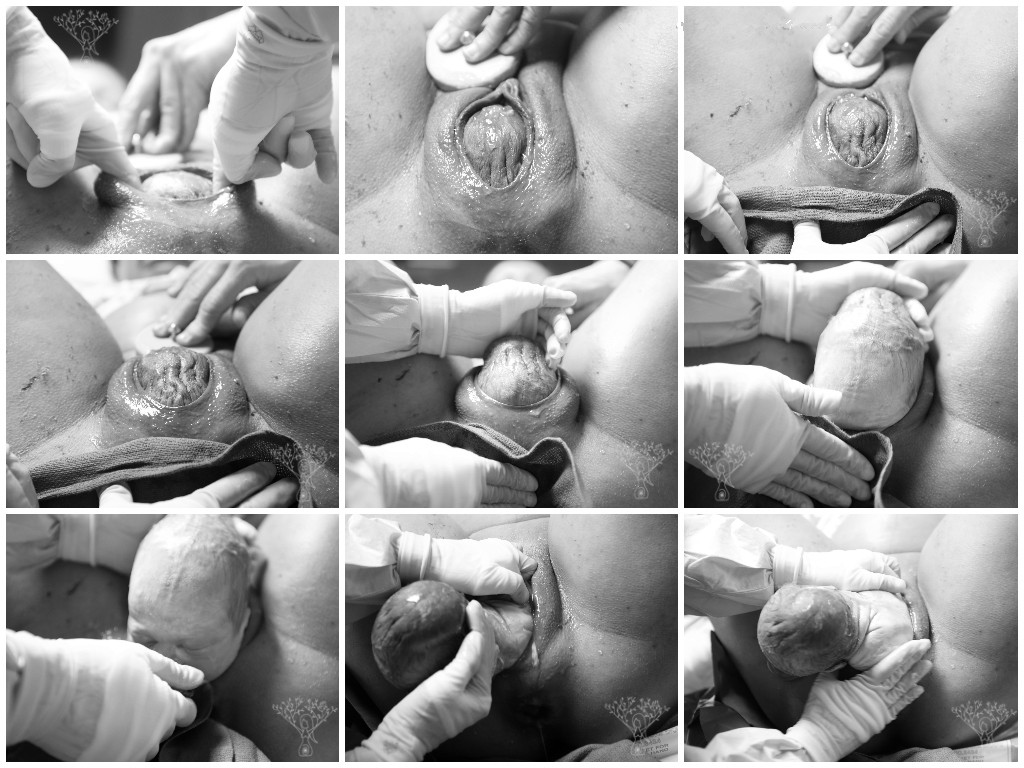 During natural birth, crowning occurs in the active stage of labor when the baby's head is just about to come out. But before this, a woman has to undergo various stages of labor, which begins with the onset of irregular uterine contractions. After a while, the contractions become more regular and intense. These are accompanied by the widening of the cervix and the descent of the baby's head. When your cervix is fully dilated, the pushing phase begins and crowning occurs.
During natural birth, crowning occurs in the active stage of labor when the baby's head is just about to come out. But before this, a woman has to undergo various stages of labor, which begins with the onset of irregular uterine contractions. After a while, the contractions become more regular and intense. These are accompanied by the widening of the cervix and the descent of the baby's head. When your cervix is fully dilated, the pushing phase begins and crowning occurs.
What Is Natural Birth Crowning?
Active labor is the stage of labor when a woman experiences regular uterine contractions. These occur because the powerful muscles of the uterus tighten and relax every few minutes to push a baby into the birth passages. As these occur, the cervix (which is the opening of the uterus to the vagina) progressively widens and thins out to allow natural birth crowning.
Birth crowning begins when your baby's head slowly starts to peak out the cervix during every contraction in the active stage of labor. This is also called the pushing phase, at which the mother is urged to push. At the start, the top of your baby's head appears to come out, but when the contraction is over, it disappears from view, only to appear again during the contractions.
Finally, in the later stages, the head is able to partly come out without slipping back in, and it awaits the next strong contraction before coming out completely. This is crowning, which signals that your baby's arrival is forthcoming. And the natural birth crowning is so named since your baby's head at this stage seems to be wearing a crown.
How to Perform Natural Birth Crowning
More often than not, the process of natural childbirth is painful and uncomfortable. The only way to completely relieve these feelings is to give birth to the baby, after which most mothers seem to forget the difficulties of labor. Here we list some tested and effective ways to go through the process:
Find Your Position
Women may find some birth positions more comfortable and effective than other ones. The basic and effective birth positions include:
- Side-lying position, which is best for slow, controlled childbirth.
- All fours position, which is the best when you are delivering a large baby or a baby laying in posterior presentation.
- Squatting position, which is recommended when it seems like you are having a quick labor or a large baby.
How to Push and Breathe
During natural birth crowning, you will naturally feel an "urge to push" as your uterus contracts and tells you to push your baby out. However, it is critical for you to know that pushing in this stage is not the same as you would use your abdominal muscles while you are moving your bowels. You do not have to hold your breath and "bear down." Remember that if do this, your baby will not be getting enough oxygen. So, the best way to push and breathe is to let your baby drift down slowly, in a controlled fashion. It makes you more comfortable, allows you to conserve energy and reduces the risk of tearing the perineum.
The proper way to push and breathe duringnatural birth crowning is to keep the mouth open with the jaw and throat relaxed. You can also place your hand on your abdomen, under your breasts. You must feel the tightening of this part of your abdomen under your hand when you feel an urge to push while your perineum is relaxed.
Before you go into labor, you may want topractice how to exhale properly. This means learning how to avoid blowing out of your mouth, but letting air flow through the body. During labor, it helps to whisper an "ah" or "oo" sound while exhaling. It keeps your head, neck and jaw relaxed and helps relax the perineum, too. You can also practice a relaxation script daily to develop your skill until this becomes an automatic response.
How Do You Feel During Natural Birth Crowning?
Natural birth crowning will give you a stretching and burning sensation, which is sometimes called "the ring of fire." You will feel this as the baby's head stretches your cervix for a few minutes. At this point, you may want to change positions and be advised to control the pushing, which may be difficult. You may try a squatting position and take short and shallow breaths to minimize tearing. However, if you are having an epidural, you may not experience this sensation at all.
How Can You Relieve the Pain?
- Hold a warm flannel against your perineum during crowning can reduce tearing, and decease pain and incontinence during the postnatal period.
- Studies show that using warm compresses can also decrease perineal trauma. Some people believe that water birth is also effective for avoiding tears.
- Your midwife or doctor can support the perineum during natural birth crowning. Hot compresses and warm oil massaged into your skincanhelp soften the skin for stretching. Lightly massaging oil on your skin during pregnancy can help reduce postpartum bruising.
